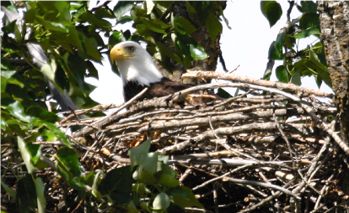Clark Fork
 Established when the Northern Pacific pushed its main line through Northern Idaho in the 1880s, Clark Fork is the gateway into North Idaho’s giant outdoor playground. Located at the northeast end of Lake Pend Oreille on the Clark Fork River, this small but active community hosts a full range of outdoor activities, along with gift shops, restaurants, and lodging.
Established when the Northern Pacific pushed its main line through Northern Idaho in the 1880s, Clark Fork is the gateway into North Idaho’s giant outdoor playground. Located at the northeast end of Lake Pend Oreille on the Clark Fork River, this small but active community hosts a full range of outdoor activities, along with gift shops, restaurants, and lodging.
The geology in the area is a facinating story of the Ice Age Floods. During the most recent episode of major ice-sheet expansion, between about 18,000 and 13,000 years ago, a lobe of the Cordilleran ice sheet advanced into the Idaho Panhandle to the area that is now occupied by Lake Pend Oreille, thus blocking the Clark Fork River drainage and causing Glacial Lake Missoula to form. At its largest, the lake was deeper than 2,000 feet deep at the dam and held over 500 cubic miles of water–as much as Lake Erie and Lake Ontario combined. The ice dam, however, was subject to repeated failure.
East of Clark Fork about 7½ miles along Highway 200 is the exit to Cabinet Gorge Dam viewpoint, only ½ mile west of the Montana border. Below the dam is the Cabinet Gorge Fish Hatchery, designed to handle 20 million Kokanee Salmon annually.
Make Clark Fork your port of entry to the Selkirk Loop from Montana or take an afternoon from Sandpoint and drive the Pend Oreille National Scenic Byway along Highway 200. Your may also take the Lake Pend Oreille-Kootenai River Super Side Trip from Sandpoint along the Pend Oreille National Scenic Byway through Clark Fork to the junction of Hwy 200 and State Hwy 56 in Montana. This 112 mile route will return you to Bonners Ferry, back on the main International Selkirk Loop Route. You’ll be glad you did.
 International Selkirk Loop
International Selkirk Loop